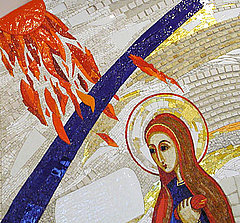Conoscere il giudaismo fa conoscere meglio la Vergine Maria
Il Sinai, facevano rilevare già alcune voci del giudaismo antico, è situato fuori dalla Palestina, la terra promessa . Malgrado non sorgesse entro la Terra Santa, Dio scelse quella montagna per offrire a Israele il suo dono più grande, che è la Torah. Per quale motivo Dio usò questa strategia ? Si risponde : perché il Signore destinava la sua Legge non solo a Israele, ma anche a tutti gli altri popoli, mediante Israele.
Anche Nazaret di Galilea è una località quasi ai margini della Terra Santa ed era detta « degli stranieri » (in Is 8,23 nei LXX e in Mt 4,15), tanto che Natanaele domanda : "Da Nazaret può mai venire qualcosa di buono ?" (Gv 1,46). Così pensano gli uomini.
Ben diverse, invece, sono le vie di Dio (Is 55,8-9). Nella geografia dei vangeli, la Galilea diviene sinonimo di universalità: su un monte della Galilea, Gesù pronuncia il discorso inaugurale delle beatitudini (Mt 5), a Cana di Galilea opera il primo e il prototipo dei suoi segni (Gv 2). Dopo la Risurrezione, ancora su un monte della Galilea, comanda agli apostoli di predicare il Vangelo a tutte le genti (Mt 28,16-20) Ed è proprio a Nazaret di Galilea il Verbo si fece carne (Lc 1,26-28).
A.SERRA
A. Serra, Myriam, fille de Sion, Médiaspaul 1999
A. Serra, E c’era la Madre di Gesù, Marianum, Roma, 1989

